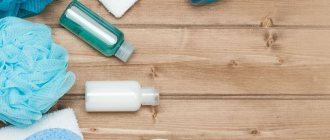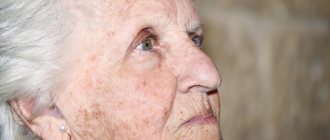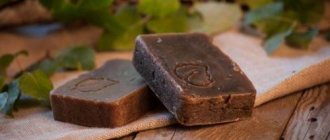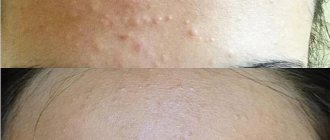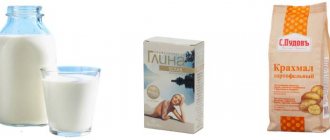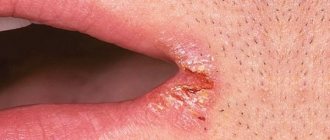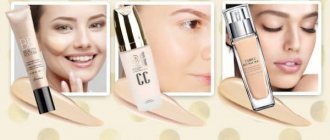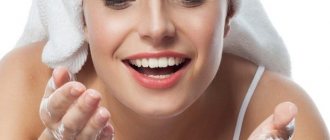Basic definitions
In order to find out what post-acne is, you need to understand the mechanism of acne. In the dermis there are glands that secrete a special fatty secretion to protect the epithelium from harmful environmental influences and moisture.
When the substance is produced more than necessary, it acquires a thick consistency and clogs the gland ducts.
The sebaceous plug also consists of dirt, dust, particles of cosmetics and dead epidermis. Once the bacteria gets inside, infection occurs and inflammation of the surrounding tissue begins.
A pimple appears, the cavity of which is filled with purulent contents. In the absence of adequate treatment, the rashes take on a chronic form - acne. Secondary skin changes occur due to a decrease in the ability of the epithelium to recover.
Squeezing and other improper manipulations severely injure not only the integument, but also the ducts of the sebaceous glands.
As a result, traces remain - post-acne:
- enlarged pores;
- red spots in areas of healing papules;
- pigmentation;
- scarring;
- scars from pustules and nodes.
Badyaga is a medicine of natural origin used to treat bruises, contusions and bruises.
This is a powder made from dried and crushed sponges of the badyagov family. Creams, ointments and masks based on it cope well with the signs of post-acne.
Cleansing occurs on the principle of peeling, which is carried out through microscopic needles or spicules - particles of the internal skeleton of freshwater multicellular organisms.
Features of badyagi against pigmentation
Badyaga is a dried and crushed freshwater sponge, its body consists of many spicules - tiny needles, the network of which is created by silica, and the sponge tissue contains spongin - a horny substance. They are the active substances of the drug on a natural basis. Badyaga has an exfoliating effect and helps fight against age spots on the face and body.
Skin pigmentation can be caused by:
- accumulations of melanin (natural pigment);
- marks after treatment of acne and acne (post-acne);
- injury (scratches, abrasions, cuts);
- consequences of exposure to UV radiation in solariums and tanning in the sun;
- spots from ingrown hairs on the legs after hair removal;
- darkening due to bruising.
You can purchase the product in the form of a powder or gel (cream) at the pharmacy. The advantage of the drug is its low cost, natural ingredients and effectiveness. Freshwater sponge powder is gray-green in color. The product is sold in paper bags packaged in 5 g or in cardboard packaging weighing 50 g. Liniment has a creamy transparent base with dark inclusions. Available in plastic tubes of 50 ml and 75 ml.
Badyaga for pigmentation on the face has a peeling effect. Dry sponge particles exfoliate the top layer of the epidermis along with pigmented cells. The dark shade of spots of various natures is noticeably lightened after applying several masks.
Badyagu is used to remove age spots and to treat the effects of acne, closed comedones, blackheads, rejuvenation and improvement of the appearance of the skin. These actions occur due to the unique composition of the product. Silica stimulates cell growth, affects their regeneration and collagen production. Spongin removes dead cells, unclogs pores, which helps cleanse and saturate the dermis with oxygen. Spicules normalize blood circulation in the skin. The beneficial effect is noticeable after 2-3 masks with badyaga. The skin becomes fresher and tighter, spots fade, and inflammation subsides.
We recommend reading
- Salicylic acid to remove age spots
- Analogs of Melanativ cream for pigmentation: review of products
- How to remove age spots at home using celandine
Advantages and disadvantages of the substance
The needles included in badyagi stimulate blood flow to tissues, causing skin cells to rapidly divide and renew themselves. Thanks to this, the integument is quickly restored and rejuvenated. In cosmetology, peeling has the same effect, only the effect occurs with special chemical compounds.
The benefits of using badyagi for post-acne are:
- skin regeneration processes are launched;
- dead scales of the stratum corneum of the epidermis are peeled off;
- tissue breathing is facilitated;
- dark spots are lightened;
- scars are reduced;
- pores are cleaned and narrowed;
- the activity of the sebaceous glands decreases;
- improves complexion;
- small wrinkles are smoothed out;
- aging slows down;
- acne goes away.
However, badyaga is not as safe as it might seem at first glance. Its disadvantage is the adverse reactions that occur after prolonged or improper use.
The following troubles are most often observed:
- allergy;
- excessive redness;
- loss of elasticity;
- cyanosis of the integument;
- the risk of skin diseases increases;
- Excess ultraviolet radiation increases the likelihood of sunburn.
How effective is badyaga against acne spots?
Microscopic needles present in the drug have an irritating effect, causing many injuries invisible to the eye. The skin reacts to irritation by increasing its protective functions and accelerating the regeneration process. Blood rushes to the surface of the epidermis, enhancing the anti-inflammatory effect.
The formation of spots after acne is caused by the deposition of melanin pigment in areas of inflammation. In this case, the spots turn brown. This post-acne effect is called post-inflammatory pigmentation. Badyaga, causing cell renewal processes in the surface of the skin, helps restore the normal color of the damaged area. It will also effectively help get rid of fresh scars left by acne.
However, if the spots become red after inflammation, this is a consequence of the expansion of capillaries in the area of inflammation. In cosmetology, this process is called post-inflammatory erythema. You should not use badyagu if you have red spots from acne. When the skin receives microtraumas, already dilated capillaries become even more deformed. This can cause the problem to worsen and the area of irritation to spread.
KK Adapt. 5 paragraph
Rules for using badyagi for post-acne on the face
It is not difficult to prepare a medicinal composition from powder.
For this you will need:
- badyaga;
- hydrogen peroxide 3%;
- cotton wool;
- brush;
- latex gloves.
The ingredients need to be mixed to form a mass of thick sour cream.
It is important that there is no foam. If it appears, then you should add a little more powder. To avoid triggering an allergy, it is recommended to first conduct a sensitivity test.
To do this, apply a little product to the inside of the elbow or to the area behind the ear, and wash it off after half an hour. If after a day there is no significant discomfort (burning, itching), severe redness or rash, peeling, then badyagu can be safely used to treat post-acne.
Before application you need to prepare:
- Wash your face with a special gel or soft foam, wipe dry.
- Remove any remaining dirt with an alcohol-free toner.
- Lubricate the sensitive areas around the eyes and lips with a rich cream.
- Roll cotton wool into balls and close your nostrils so that the composition does not get on the mucous membrane.
- Wear gloves to avoid hand irritation.
The mask is applied with a brush to the entire surface of the face or only to the affected areas.
It is important not to touch the skin around the eyes and lips.
Then rub the product in with light massage movements, paying special attention to pigmented areas.
The composition is kept for no more than 15 minutes, after which it is washed off with warm water. For the first time, it is better to reduce the exposure time to 5–10 minutes. Finally, the face must be lubricated with a moisturizing or nourishing cream with a high sun protection factor.
The procedure has important nuances:
- if there is a slight tingling sensation, then this is a normal reaction;
- the appearance of a strong burning sensation indicates an allergy, this should not happen;
- if the skin is not too oily, then it is better to replace hydrogen peroxide with hot boiled water;
- the next day the face becomes very red and the epidermis peels off. After the old layer is peeled off, a new smooth epithelium will appear, so this is normal;
- People with oily skin are recommended to peel once every 7 days, with dry skin – every 2 weeks;
- the course of treatment is 8–10 procedures;
- badyagu can also be used to cleanse the body;
- It is more useful to do procedures during the season with low solar activity, since ultraviolet radiation leads to the appearance of new spots on renewed skin. For the same reason, you should not go outside for 2-3 hours after applying the product.
Rules of application
Apply the powder to previously cleansed skin using a sponge, soft brush or rubber gloved hand.- Do not make too sudden movements or rub the product too hard. Try to be careful to apply only light pressure to the skin.
- The anti-acne remedy is used only after the inflammation has completely passed. Do not apply the product to inflamed acne, as this only aggravates the problem.
- Using particularly aggressive agents, for example, a mixture with boric alcohol or peroxide, it is advisable to treat only the most affected areas. You cannot cover your entire face.
- Masks based on badyagi are kept on the face for no longer than 5-20 minutes.
- A full course of treatment consists of 10 procedures. If the patient does not suffer from intense skin diseases, but only periodically struggles with rashes on the face, then five procedures will be enough. If the damage is very severe, you will have to perform up to 15 procedures. The mask can be done no more often than every 3-4 days.
- In most cases, after using the product, the face becomes covered with redness, and this condition persists for three hours. The skin also increases sensitivity to ultraviolet rays and any other aggressive influences. To avoid troubles, it is recommended to start the procedures in the evening before going to bed.
- When removing the paste from your face, do not rub it, as this may increase the pain. To minimize them, simply lean over the bathtub and turn on a low pressure of soft water.
- As soon as the skin is cleansed from the mask, do not apply creams to your face for at least 12 hours.
- For the next 2 days, try not to touch your skin with your hands or other objects, because when you touch, you may get the feeling that there are many needles under the skin.
- After the procedure is completed, severe peeling of the skin may begin on approximately the third day. You should not be afraid of such a reaction, because it indicates renewal of the skin.
- Between procedures, the skin needs to be cleansed in a particularly gentle way, about half an hour before you plan to go outside. During processing, use a nourishing cream, preferably with reliable protection from sunlight.
- When completing the course, you should avoid using aggressive cosmetics, especially those with a high content of alcohol or tea tree oil.
How to get rid of acne
On the Internet you can find many reviews about using badyagi for acne. Its mixture with hydrogen peroxide dries out rashes well.
There are other recipes for making masks:
- The powder is mixed in equal proportions with talc and three parts of white clay. Then dilute with water to a mushy state. The method of using this composition is similar to the first option;
- combine equal amounts of badyagi, green clay and salicylic acid. Add some water. The product is applied pointwise for 15–20 minutes and then washed off.
If your skin has inflamed, purulent or painful acne, this treatment will not work.
Application of Bodyaga Forte cream
In addition to the natural powdery substance obtained from freshwater sponges, the pharmaceutical drug Badyaga Forte receives good reviews. This cream is brown in color with darker flecks. It has a gel texture and a peculiar smell.
The effectiveness of using Badyaga Forte cream in the fight against age spots and other skin defects is confirmed by research from the Russian Academy of Sciences. Within two to three days after starting skin treatment with this drug, you can notice a whitening effect.
In addition, the Badyaga Forte cream mask has proven itself very well. In addition to badyagi, this drug contains nasturtium extract. This plant is rich in B vitamins, as well as vitamins A and C, and various microelements.
Industrially produced sponge-based preparations are also active in the epidermis. The combination of these two ingredients gives very positive results in the fight against increased skin pigmentation. In addition to the whitening effect, the Badyaga Forte mask promotes skin rejuvenation and eliminates areas of inflammation on it.
The positive features of the pharmaceutical products in their Badyaga Forte series are their ease of use and effectiveness, confirmed by scientific research. However, you need to be careful with these drugs, as they dry out the skin and can increase flaking.
Creams and ointments
The anti-acne remedy is more gentle if it is an ointment, cream or gel. Ready-made drugs are sold in pharmacies at affordable prices. Of course, they are less effective against post-acne, since the concentration of dried sponges is lower there. But they are suitable for people with sensitive and dry skin, and they can be used more often and for longer.
Additionally, the composition may include extracts of medicinal plants, essential oils and other auxiliary components.
These include:
- Badyaga forte is a gel against age spots and stagnant spots after acne. Contains extracts of yarrow and plantain. It is applied to cleansed skin and washed off after 15 minutes;
- Badyaga 911 is a balm for bruises and contusions with extracts of horse chestnut, chamomile, urea, juniper oil, arnica, mint and tea tree. The method of using it is no different. Do not apply the gel to wet surfaces, as this may provoke an allergic reaction.
Find out how anti-acne makeup remover for problem skin works. How to get rid of post-acne on your face? Read more. Is mesotherapy safe for post-acne? Details here.
Description of the product
Over the years, badyaga (sometimes also called “badaga”) has been used for a variety of purposes, including for treating a face affected by any defects. The product effectively eliminated all kinds of skin imperfections , combated age spots, peeling, bruises, scars, stretch marks, pimples and their marks. Many girls even used it to create a delicate blush.
Despite the wide variety of cosmetic solutions, badyaga for acne on the face is still popular and has practically no analogues in its cheapness and effectiveness. Most often it is used to combat acne spots and acne.
The description of the product mentions that badyaga is a common species of freshwater sponge from the badyaga family of the same name. It can be found in clean lakes, rivers and other bodies of water on snags, piles and stones that are hidden under thick water. Caught and dried badyaga looks like an ordinary porous sponge with characteristic large cells. It is very easy to grind it in your hands, after which it takes the form of a powder.
The final product is prepared on an industrial scale, placed in bags and sold, retaining the name of the raw material. However, these days it can also be sold in the form of gels or creams, which contain additional components. Nevertheless, the classic version still remains a gray-greenish powder with a characteristic unpleasant odor.
Experts' opinion
The opinion of experts regarding the use of badyagi for the treatment of post-acne and acne is ambiguous. Some allow its careful use in small local areas or targeted, but always after consultation with a doctor. Others find the product less effective and more dangerous than proven salon techniques.
Still, most cosmetologists believe that traditional medicine cannot be a panacea against skin defects.
They pay attention to the high risk of side effects. Moreover, reactions appear not only immediately after the procedure, but also after some time.
Often, after incorrect manipulations at home, people suffer from the consequences:
- increase in the number of rashes;
- multiple telangiectasia (dilation of small blood vessels);
- widespread redness and irritation;
- allergic rash in the form of small tubercles;
- prolonged pain;
- dehydration and prolonged peeling;
- persistent pigment spots.
Badyaga is a popular remedy for reducing the intensity of post-acne. If you use it regularly and with caution, the skin will become lighter, fresher and renewed, wrinkles and age spots will disappear.
However, the substance should not be abused, otherwise its negative aspects will appear. The skin will become too sensitive and more susceptible to irritating factors.
It is also worth noting that pronounced, old scars and scars cannot be removed with the help of a badyagi. In this case, only modern salon procedures will help.

